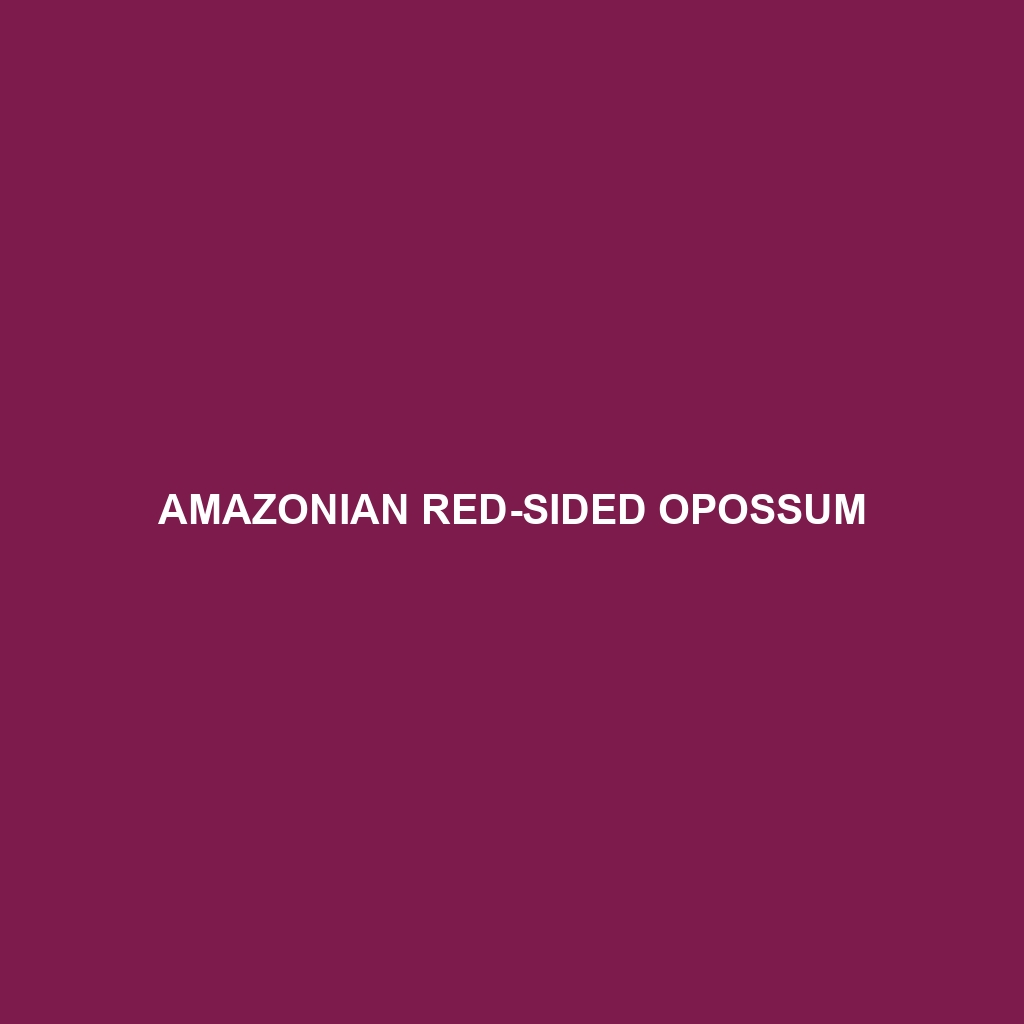Amazonian Red-sided Opossum: A Comprehensive Guide
The Amazonian Red-sided Opossum (*Monodelphis sp.)* is a fascinating marsupial native to the dense, vibrant rainforests of the Amazon Basin. Renowned for its striking appearance and unique adaptations, this small mammal plays a crucial role in its ecosystem. Despite its elusive nature, the Amazonian Red-sided Opossum captivates researchers and wildlife enthusiasts with its distinctive behaviors and ecological significance.
Physical Characteristics:
Size: The Amazonian Red-sided Opossum is a small to medium-sized marsupial, typically measuring about 15 to 20 centimeters (6 to 8 inches) in body length, with an additional tail length of around 10 to 12 centimeters (4 to 5 inches). Adults generally weigh between 100 to 150 grams (3.5 to 5.3 ounces).
Coloration: This opossum is easily recognizable by the vivid red or orange coloration on its sides, which contrasts sharply with its grayish-brown back and creamy white underbelly. The vibrant colors are more pronounced in males, particularly during the breeding season.
Special Features: One of the most notable features of the Amazonian Red-sided Opossum is its prehensile tail, which is adept at grasping and holding onto branches, aiding in its arboreal lifestyle. Additionally, it has sharp claws and strong limbs that facilitate climbing.
Behavioral Characteristics:
Social Interactions: Typically solitary, the Amazonian Red-sided Opossum is known for its nocturnal habits. It leads a predominantly solitary life, with interactions primarily occurring during the mating season. Mothers are highly protective of their young, carrying them in a pouch or on their back.
Feeding Habits: This opossum is an omnivorous forager, with a diet consisting of insects, small vertebrates, fruits, and nectar. Its flexible diet helps it adapt to varying food availability in the rainforest.
Ecological Role: As both a predator and prey, the Amazonian Red-sided Opossum plays a pivotal role in the Amazonian food web. By controlling insect populations and dispersing seeds through its frugivorous habits, it contributes to the health and balance of its ecosystem.
Habitat and Adaptations:
Habitat: The Amazonian Red-sided Opossum is predominantly found in the lowland rainforests of the Amazon Basin. It prefers dense, moist environments with abundant foliage and tree cover, which provide ample food sources and protection from predators.
Adaptations: Well-adapted to an arboreal lifestyle, this opossum’s prehensile tail, sharp claws, and strong limbs enable efficient climbing and foraging in the treetops. Its nocturnal nature helps it avoid daytime predators, while its keen sense of smell aids in locating food in the dark.
Conservation Status:
Currently, the conservation status of the Amazonian Red-sided Opossum is not well-documented, largely due to its elusive nature and the vast, often inaccessible rainforest habitat it occupies. However, like many rainforest inhabitants, it faces potential threats from habitat destruction due to deforestation and climate change. Conservation efforts focused on preserving the Amazon rainforest are crucial to ensuring the survival of this and many other species.
Fascinating Fun Facts:
Unlike many marsupials, the Amazonian Red-sided Opossum does not have a well-developed pouch. Instead, the young cling to the mother’s teats and later ride on her back.
This opossum is capable of a unique form of hibernation called “torpor” during periods of food scarcity, lowering its metabolic rate to conserve energy.
The vivid red or orange markings on its sides are believed to play a role in mating displays and may also serve as a warning to potential predators.
The Amazonian Red-sided Opossum is a remarkable example of the diversity and complexity of life in the Amazon rainforest. Its distinctive attributes and behaviors offer valuable insights into the adaptability and resilience of rainforest species. By understanding and protecting this unique marsupial, we contribute to the broader efforts of conserving one of the world’s most vital and dynamic ecosystems.
